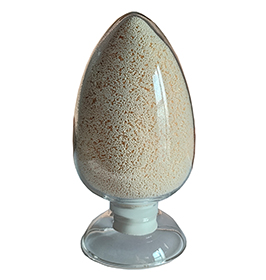

Mobile version









Linhai Resin LH-8528 is a food-grade macroporous weakly acidic cation exchange resin used in standard parallel regeneration systems. Suitable for the food industry and drinking water production, it can remove cations and softening solutions, improving product quality. It has excellent performance in standard parallel flow regeneration systems and composite fluidized bed systems, and has a wide range of application prospects.
Applications in the food industry and drinking water production
The hydrogen form of LH-8528 is suitable for the decationization and softening of tap sugar solutions and solutions of organic products such as sugar beets, sugar cane, starchy sugar, glycerin, gelatin, etc. In the food industry, LH-8528 is used in a wide range of applications. Its bead-like morphology and specific bead size distribution make the resin excellent for handling food solutions. When used to treat sugar solutions, it effectively removes cations, preventing the mineral and hardness components of the sugar solution from adversely affecting product quality.
In addition to sugar solutions, LH-8528 is also suitable for processing other organic product solutions such as sugar beets, sugar cane, starchy sugar, glycerin, and gelatin. During the production process, these products often produce some unwanted cations, such as calcium, magnesium, etc. By using LH-8528, these cations can be efficiently removed, improving the purity and quality of the product.
In drinking water production, LH-8528 in hydrogen form also plays an important role. It can be used to remove hardness and other cationic contaminants from water, thereby improving the quality of drinking water. In addition, since the resin is food-grade, it meets the stringent requirements for material safety in the production of drinking water.
In standard parallel regeneration systems and composite fluidized beds, LH-8528 has demonstrated excellent performance. These systems are able to efficiently regenerate resins, allowing them to maintain high exchange capacity and stability. In addition, the design of the composite fluidized bed allows the resin to be evenly distributed during processing, thereby improving treatment efficiency and resin utilization.